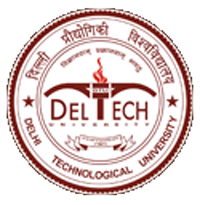Please use this identifier to cite or link to this item:
http://dspace.dtu.ac.in:8080/jspui/handle/repository/21702| Title: | STRAIN ENGINEERING OF THERMOELECTRIC PROPERTIES OF HALIDE PEROVSKITE : A FIRST PRINCIPLES STUDY |
| Authors: | YADAV, SUMEDHA |
| Keywords: | STRAIN ENGINEERING THERMOELECTRIC PROPERTIES HALIDE PEROVSKITE SOC |
| Issue Date: | Jun-2025 |
| Series/Report no.: | TD-7945; |
| Abstract: | As global energy consumption continues to rise, the conventional energy sources becoming unprecedently more pressing. Moreover, the depletion of conventional fossil fuels and their environmental impact raises serious concerns about long-term sustainability. This challenge makes it essential to explore alternative, renewable energy solutions that can support future energy needs while minimizing ecological harm. Thermoelectric (TE) materials represent one of the most promising avenues for sustainable energy conversion. These materials can harness useful electricity from waste heat and thus have been a research focus in recent years. One such type is halide perovskites with crystal structure of form A3BX3. Many studies have demonstrated how strain and spin-orbit coupling (SOC) reduce the bandgap in halide perovskites, potentially enhancing their TE efficiency. We investigate structural, dynamical, elastic, electronic, and thermoelectric properties of cubic perovskite halide Ca3AsBr3 under the effect of strain using first-principles calculations. It is found to have a direct bandgap of 2.425 eV that further reduces under compressive strain making it an ideal candidate for thermoelectric application. The material satisfies various stability criteria, e.g., dynamical, thermodynamical, and mechanical. The transport calculations show the highest Seebeck coefficient of value -458.227 μVK⁻¹ at 700 K for n-type Ca3AsBr3 unstrained structure at carrier concentration 1×1021 cm⁻³, which is further enhanced to -482.366 μVK⁻¹ for -2% strain. The lattice thermal conductivity of the material is reduced from 1.243 Wm-1K - 1 to 0.627 Wm-1K -1 at 700 K under 3% strain. This low thermal conductivity, coupled with positive power factor values, results in increased peak thermoelectric figure of merit from 0.36 (unstrained) to 0.56 (+3% strain) at 700 K for an n-type doping concentration of 1×1020 cm⁻³. |
| URI: | http://dspace.dtu.ac.in:8080/jspui/handle/repository/21702 |
| Appears in Collections: | M Sc |
Files in This Item:
| File | Description | Size | Format | |
|---|---|---|---|---|
| Sumedha yadav msc physics.pdf | 4.07 MB | Adobe PDF | View/Open |
Items in DSpace are protected by copyright, with all rights reserved, unless otherwise indicated.



